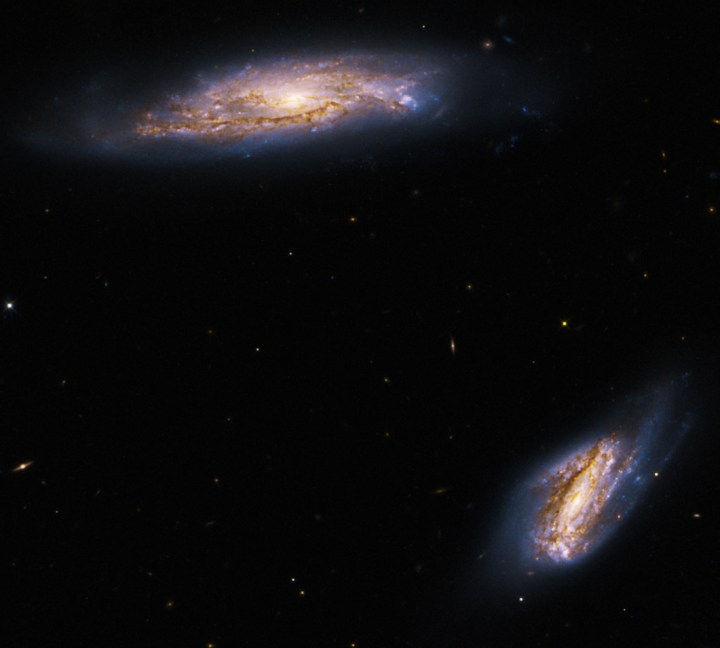This week’s image from the Hubble Space Telescope shows two galaxies that are a hotbed of star formation. The pair, known together as Arp 303 or individually as IC 563 on the bottom right and IC 564 on the top left, are located 275 million light-years away. They are in the dim constellation of Sextans, named after the astronomical instrument used to measure the position of stars.
The image below was captured by two Hubble instruments during two separate observations. The two observations were combined to show both visible light data and data from the infrared part of the spectrum.

“The image holds data from two separate Hubble observations of Arp 303,” Hubble scientists write. “The first used Hubble’s Wide Field Camera 3 (WFC3) to study the pair’s clumpy star-forming regions in infrared light. Galaxies like IC 563 and IC 564 are very bright at infrared wavelengths and host many bright star-forming regions.
“The second used Hubble’s Advanced Camera for Surveys (ACS) to take quick looks at bright, interesting galaxies across the sky. The observations filled gaps in Hubble’s archive and looked for promising candidates that Hubble, the James Webb Space Telescope, and other telescopes could study further.”
Stars are formed from clouds of dust and gas which float around in the cold space between stars. The cold temperatures cause the clouds to become clumpy, with a small amount of dust and gas coming together to create knots. Over time, more and more material is drawn to these knots due to gravity until eventually, the densest part of the cloud collapses and the material within it warms up as the particles rub against each other. This forms the core of a star, called a protostar.
This protostar attracts more gas which falls into it and creates more heat. Eventually, when the temperature reaches high enough at thousands of degrees, the protostar starts to glow, giving off infrared radiation. It becomes a young T Tauri star, with a disk of matter around it falling into the star over time, while the star also gives off jets. After this rigorous stage of accreting and expelling material, the star evolves into a main-sequence star.
Editors' Recommendations
- Hubble discovers over 1,000 new asteroids thanks to photobombing
- James Webb images capture the galactic winds of newborn stars
- Hubble captures the dramatic jets of a baby star
- The expansion rate of the universe still has scientists baffled
- See what James Webb and Hubble are observing right now with this tool




